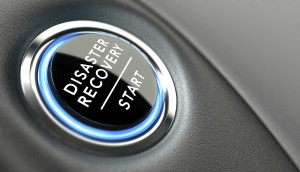
The downtime resulting from a disaster can result in serious fallout for SMBs. On average, each hour of downtime costs approximately $8,581 for small companies and $215,638 for medium companies, according to research by the Aberdeen Group. Additionally, the Institute for Business and Home Safety has found that at least 25 percent of businesses that close after disasters such as hurricanes, floods, tornadoes, and wildfires never reopen. Those that do reopen frequently have trouble staying afloat in the aftermath of a disaster.
Because of the threat disasters and subsequent data loss pose, it’s essential for SMBs to have backup and disaster recovery plans in place. A BDR plan can help you recover your data and keep it secure in the event of a disaster or a mistake that leads to lost or corrupted data. Stratosphere Networks offers data backups, business continuity solutions, and hosted data centers for businesses seeking to ensure that their data is safe, secure, and available even in the case of an unplanned event or disaster.
Dealing With Data Disasters
Any event that puts your company’s operations at risk and results in data loss qualifies as a data disaster. Although the big crises such as fires and floods might not happen that often, there are a number of smaller, more common occurrences that can also have a significant effect on SMBs. These include network outages, cyberattacks/hacking, and human error – such as an employee spilling water on a laptop.
Any of these events – big or small – could end up hurting your business, and the damage will be difficult to address without a BDR plan. You can rebuild and replace physical resources such as offices and furniture, but data might not be so easy to restore. Employing backup and disaster recovery – two distinct solutions that work together to retrieve and restore data and systems – can make the difference between surviving a crisis and closing down for good.
Effective disaster recovery involves several different components. The first is quickly recovering lost data in the event of a disaster. Second, the company should have a disaster recovery plan outlining how it will respond to a data loss event (e.g., by prioritizing “mission critical” data).
Third, it’s important to determine the Recovery Time Objective (RTO) and Recovery Point Objective (RPO). The RTO is the amount of time that an organization can run without access to its data, or the maximum amount of time it can take to restore data/applications after they go down. RPO is the maximum amount of data loss that is acceptable for the business, measured by units of time.
Disaster can strike any business at any time. However, with an effective BDR solution in place, you can rest assured that your clients’ data and your business will stay secure and survive a catastrophe. To learn more about BDR offerings, call us at 877-599-3999 or contact a sales rep at sales@stratospherenetworks.com.


